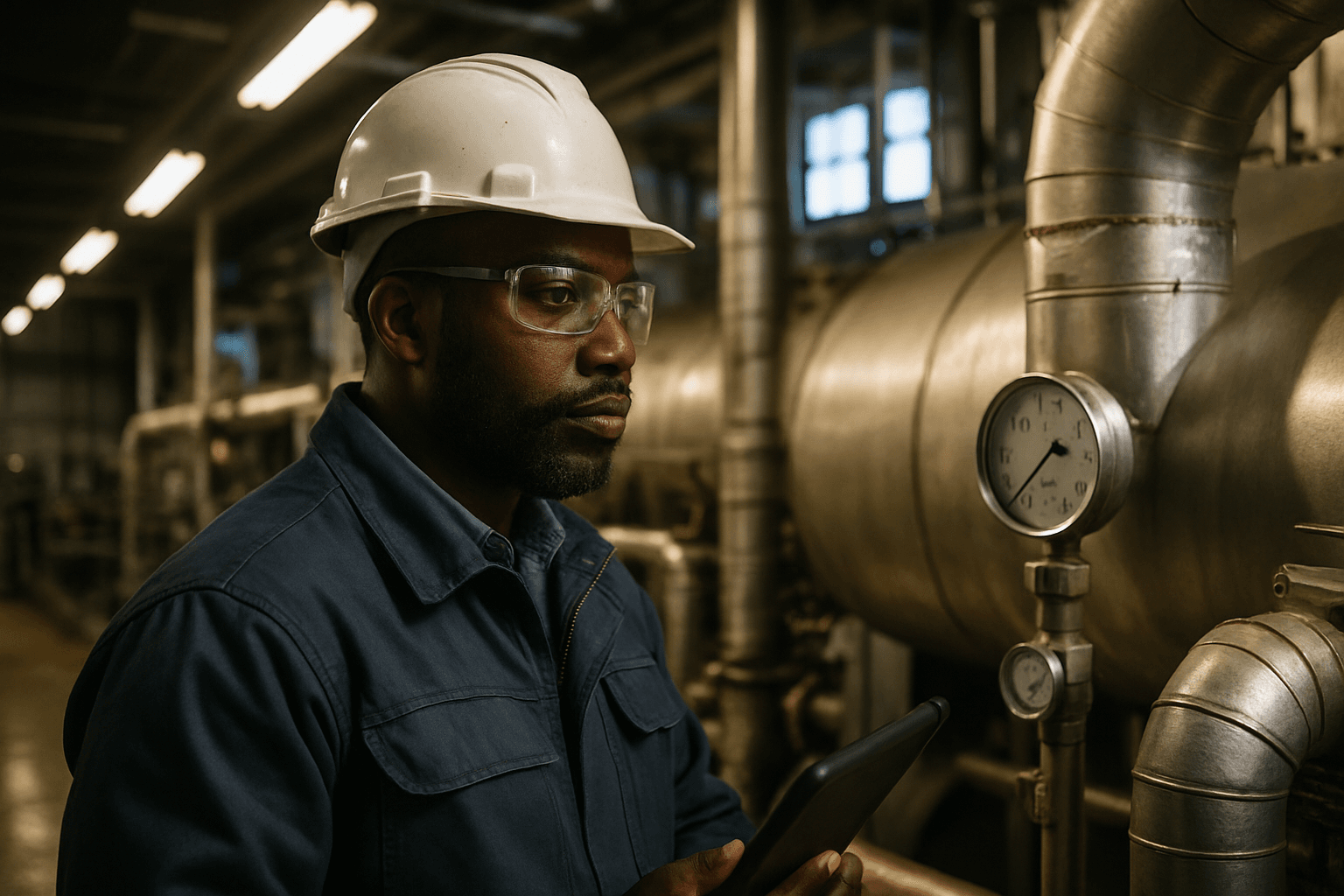Process heaters are the pulsating heart of chemical processing, oil and gas, and various industrial heating operations, consuming significant amounts of fuel to achieve high temperatures. In an era demanding both economic efficiency and environmental responsibility, optimizing the thermal performance of these fired heaters is paramount. One of the most potent and widely adopted strategies for achieving this is burner air preheating, a technique that leverages waste heat to improve combustion and overall system efficiency.
What is Burner Air Preheating?
Burner air preheating is the process of warming the combustion air before it enters the burner and mixes with fuel in the combustion chamber. The primary objective is to recover waste heat from the hot exhaust flue gases, which would otherwise be expelled into the atmosphere, and transfer this energy to the incoming fresh combustion air. This recycling of thermal energy significantly enhances the thermal efficiency of the entire heating process.
The Core Mechanism: How Preheated Air Boosts Efficiency
The fundamental principle behind air preheating is straightforward: by increasing the temperature of the air supplied to the burner, less fuel energy is required to bring the combustion mixture to its ignition point and sustain the high flame temperatures necessary for the process.
Here’s a breakdown of the key mechanisms:
- Improved Combustion Efficiency: Warmer air facilitates more complete combustion of the fuel. This leads to a higher rate of heat release and ensures that a greater percentage of the fuel’s chemical energy is converted into useful heat, rather than being lost as unburned hydrocarbons.
- Higher Adiabatic Flame Temperature: Preheating the combustion air increases the adiabatic flame temperature, which is the maximum theoretical temperature the flame can achieve without any heat loss. A hotter flame can significantly improve heat transfer to the process fluid within the heater, especially in the radiant section where radiation is the dominant heat transfer mode.
- Enhanced Heat Recovery: The heat exchanger used for preheating acts as a “heat trap,” recovering sensible heat from the flue gases that would otherwise be wasted. This directly reduces the amount of new fuel required to achieve the desired process temperature.
Key Benefits of Burner Air Preheating
Implementing burner air preheating in process heaters yields a multitude of advantages, both economic and environmental.
Fuel Savings
One of the most significant benefits is substantial fuel savings. By utilizing waste heat from exhaust gases, less purchased fuel is needed to achieve the desired energy output. For instance, preheated air at 800°F can result in up to 22% fuel savings for a furnace operating at 1600°F. Some sources indicate that efficiency can increase by not less than 5% with approximately 180°C preheating, potentially leading to annual fuel savings of around EUR 50,000 for a 2,000 kW burner capacity. Generally, heating combustion air can raise boiler efficiency by about 1% for every 40°F (approximately 22°C) increase in temperature.
Reduced Emissions
More complete and efficient combustion, facilitated by preheated air, leads to lower emissions of unburned hydrocarbons (HC) and carbon monoxide (CO). Studies have shown that preheating can significantly reduce CO and HC emissions. While preheating can sometimes increase nitrogen oxide (NOx) emissions due to higher flame temperatures, advanced combustion techniques like staged combustion or flameless combustion can mitigate this challenge. One study even suggests that pre-heating blended fuel with high air content can decrease carbon dioxide emissions by 25%.
Improved Heat Transfer and Capacity
Higher flame temperatures resulting from preheated air enhance the rate of radiant heat transfer within the furnace, which is crucial for many industrial processes. This improved heat transfer can lead to greater furnace capacity and faster process heating, thereby increasing productivity.
Enhanced Flame Stability and Faster Start-Up
Preheated air contributes to more stable combustion and can reduce the time needed to reach operational temperatures, leading to less fuel consumption during start-up periods.
Methods of Air Preheating
Various types of heat exchangers are employed for air preheating, primarily categorizing into recuperative and regenerative designs.
Recuperative Heat Exchangers
Recuperators are gas-to-gas heat exchangers where the hot flue gases and cold combustion air flow continuously on opposite sides of a heat transfer surface (e.g., tubes or plates), without mixing.
- Tubular Air Preheaters: Consist of bundles of straight tubes. Hot flue gases typically pass around the tubes, while ambient air flows through them, absorbing heat. They are generally robust but require significant space and can be susceptible to cold-end corrosion.
- Plate-Type Air Preheaters: Utilize plates to create separate channels for flue gas and air. They offer a large heat transfer area and high efficiency, often with modular designs for easier installation and maintenance.
Regenerative Heat Exchangers
Regenerators involve a heat storage medium that alternately absorbs heat from the hot flue gases and then releases it to the incoming combustion air.
- Rotating-Plate Regenerative Air Preheaters (RAPH): Also known as Ljungström heaters, these are common in large boilers. A central rotating element, filled with heat transfer plates, turns slowly through sectors for flue gas and air, continuously transferring heat. They are compact and highly efficient.
- Stationary-Plate Regenerative Air Preheaters (Rothemuhle): Similar in principle to rotating types but with stationary elements and switching mechanisms for gas flow.
- Regenerative Burners: Integrate the regenerator directly with the burner, allowing for very high air preheat temperatures (up to 80% effectiveness or higher in some designs), which can lead to substantial energy savings.
Waste Heat Recovery Systems
Beyond dedicated air preheaters, other waste heat recovery technologies, such as economizers, can also contribute to overall system efficiency by preheating incoming air or water. Steam coil air heaters can also be used, particularly in colder climates, to warm incoming air and protect the air preheater from corrosion.
Challenges and Considerations for Burner Air Preheating
While the benefits are significant, implementing air preheating systems is not without challenges.
Capital Costs
The initial investment for air preheating equipment, including the heat exchanger, ductwork modifications, and potentially larger fans, can be substantial. However, the payback period can be relatively short due to significant fuel savings; for instance, systems costing $200,000-$250,000 might have a payback period of 15 to 19 months.
Corrosion and Fouling
Flue gases often contain corrosive elements (e.g., sulfur oxides) and particulate matter. When flue gas temperatures drop below the acid dew point within the air preheater, condensation can occur, leading to acid corrosion, particularly at the “cold end” of the heat exchanger. Fouling (ash blockage) from dust and unburnt deposits can also reduce heat transfer efficiency and increase pressure drop. Specialized materials (e.g., enamel-coated tubes, glass tubes, corrosion-resistant alloys) and regular cleaning (soot blowing) are necessary to mitigate these issues.
Increased Fan Power Requirements
The addition of a heat exchanger in the flue gas path increases the pressure drop, necessitating more powerful (and thus energy-consuming) forced and induced draft fans. This parasitic load must be factored into the overall energy balance.
Safety Concerns and Material Limitations
Higher air preheat temperatures lead to higher flame temperatures, which can pose challenges for burner materials if not designed for such conditions. Special burners using heat-resistant materials or ceramics are often required. Extremely high flame temperatures can also contribute to increased thermal NOx formation if not managed with appropriate combustion techniques.
Maintenance
Air preheaters require routine maintenance, including cleaning and inspection for leaks and damage, to ensure continuous, optimized performance.
Optimizing Preheating Systems
To maximize the benefits and mitigate the challenges of air preheating, a comprehensive approach to system design, operation, and maintenance is crucial.
- Careful Design and Material Selection: Choosing the right type of air preheater and materials is critical, especially when dealing with dirty or corrosive flue gases.
- Integrated Control Systems: Advanced control systems that monitor flue gas composition (e.g., oxygen levels) and adjust air-to-fuel ratios in real-time can optimize combustion and minimize emissions.
- Combustion Optimization Techniques: Pairing air preheating with modern burner designs and combustion techniques, such as staged combustion or flameless combustion, can help manage NOx emissions effectively.
- Regular Monitoring and Maintenance: Continuous monitoring of air preheater performance, along with scheduled cleaning and inspections, prevents efficiency degradation due to fouling or corrosion.
Conclusion: The Economic and Environmental Imperative
Burner air preheating stands as a cornerstone technology for enhancing the efficiency of process heaters across the chemical, oil and gas, and broader industrial sectors. By intelligently recovering waste heat from flue gases, industries can achieve significant fuel savings, reduce operational costs, and make substantial strides toward lowering their carbon footprint and other harmful emissions. While initial investment and operational challenges like corrosion and fouling must be carefully managed, the long-term economic and environmental benefits firmly establish air preheating as an indispensable strategy in the pursuit of sustainable industrial heating.

